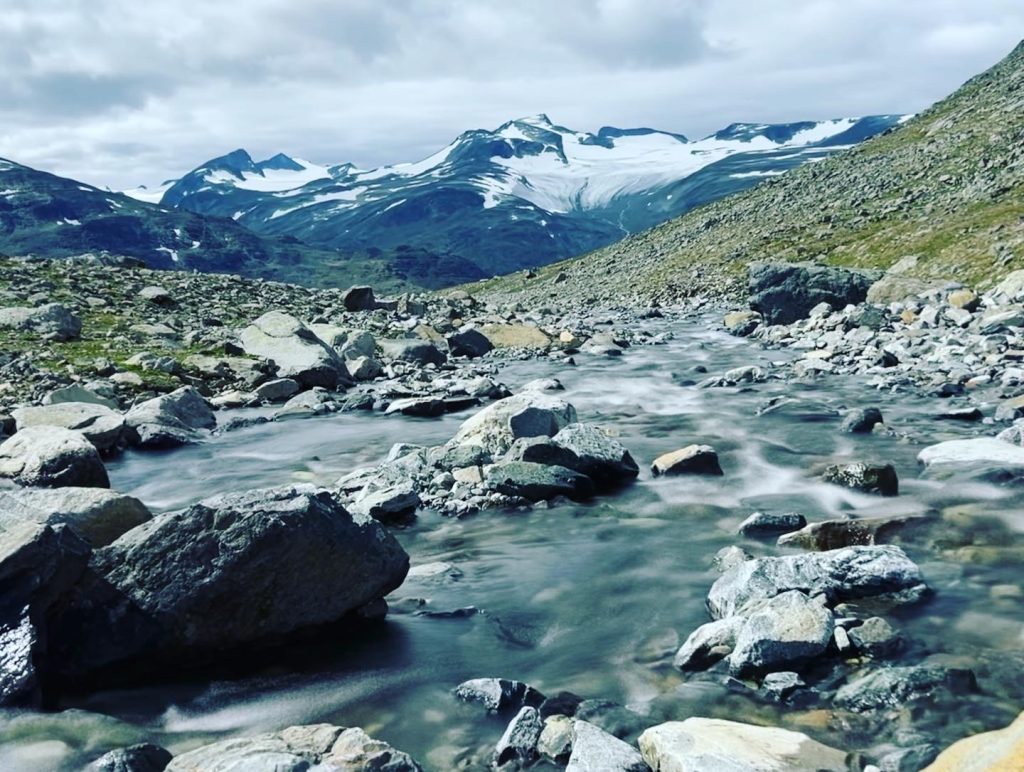
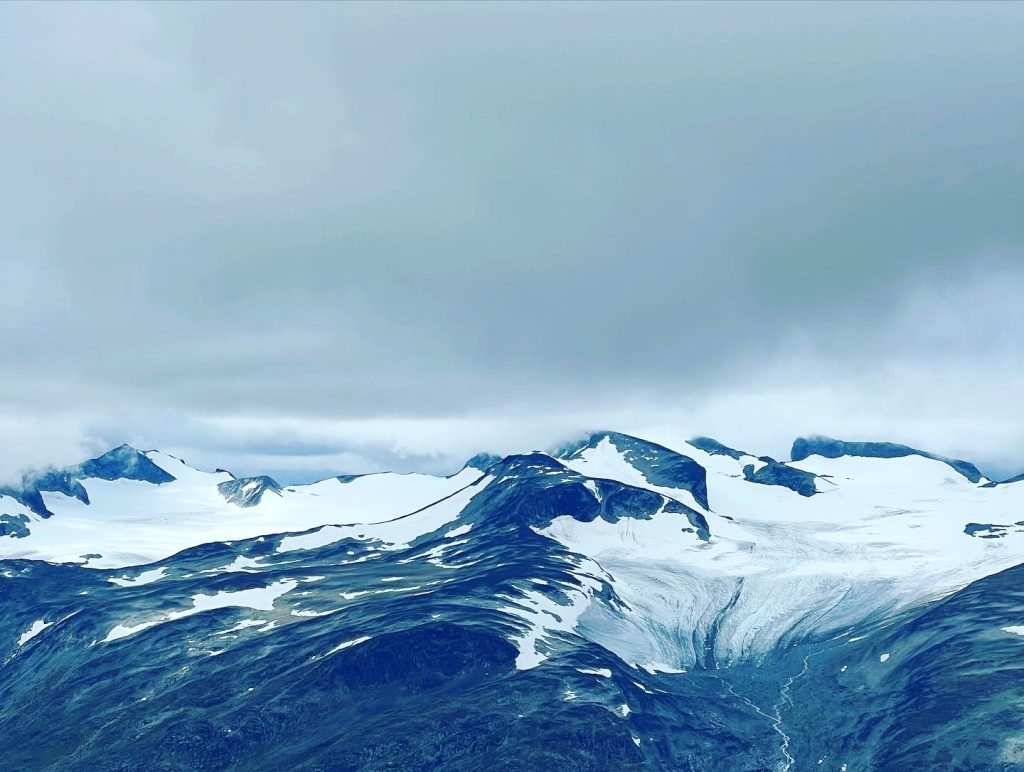
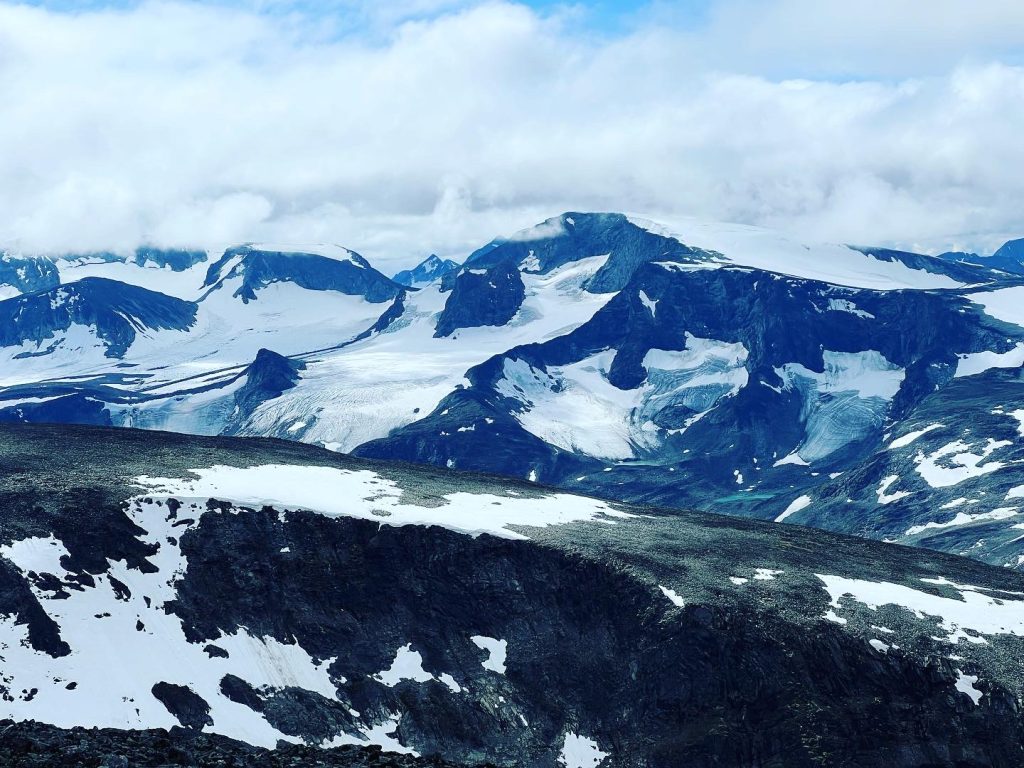
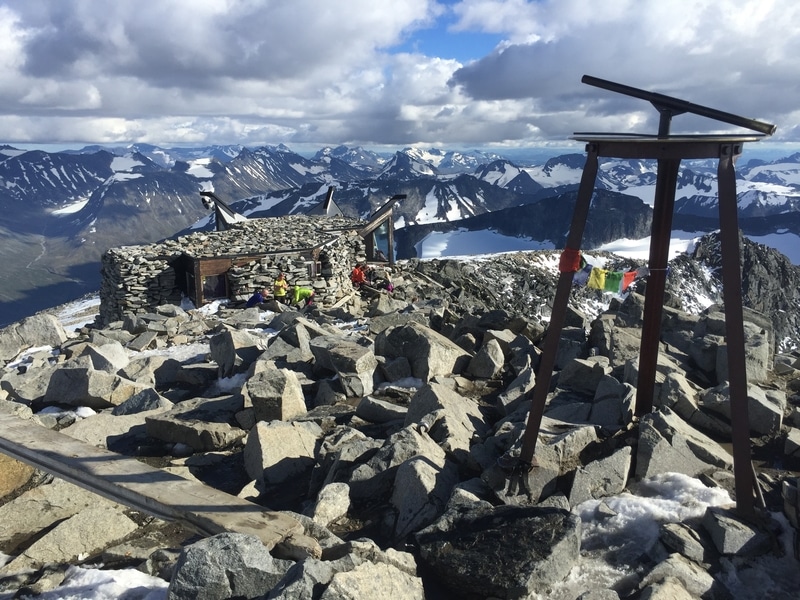
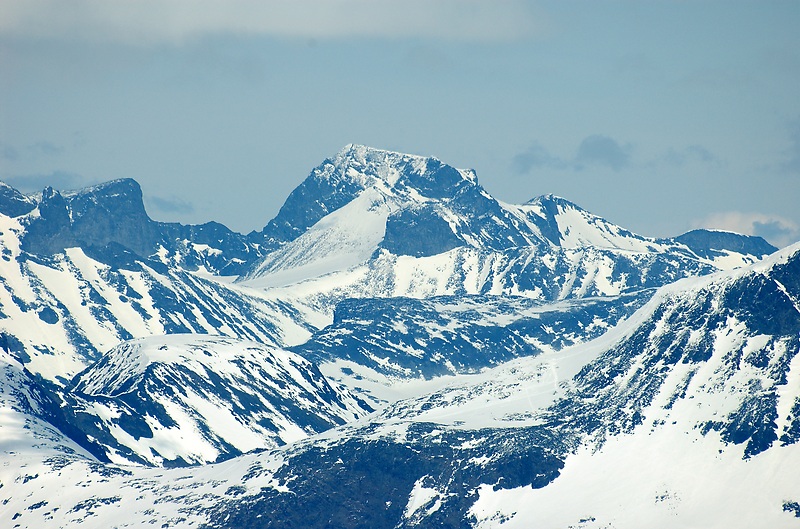
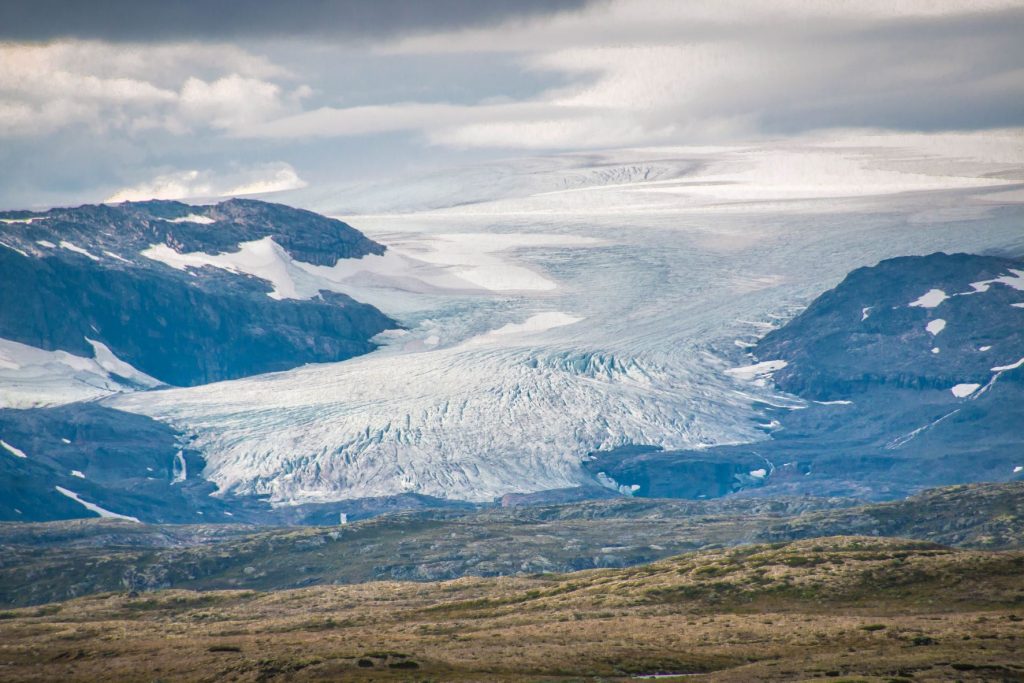
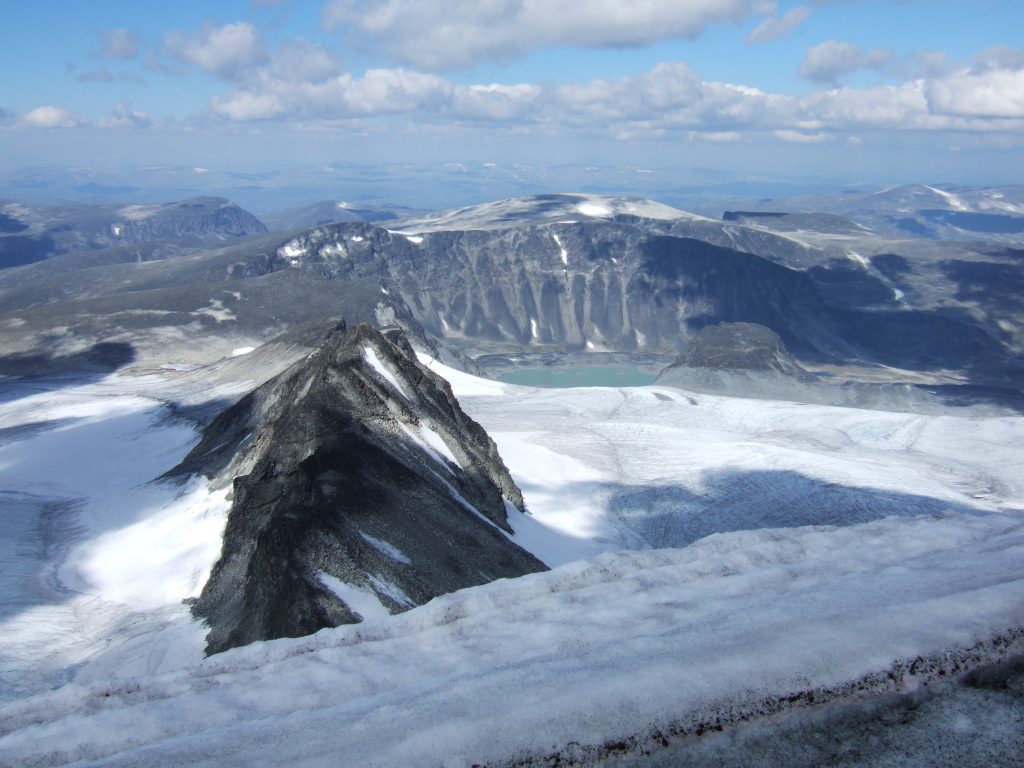

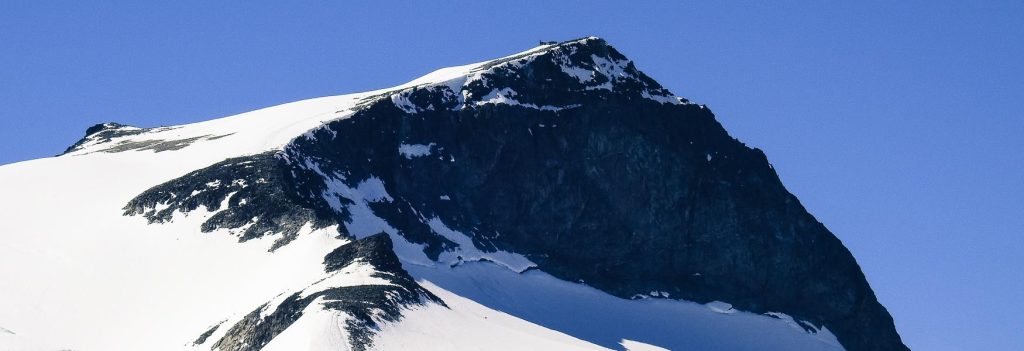
Galdhøpiggen, standing tall at 2,469 meters above sea level, holds the title of the highest mountain in Norway and Northern Europe. Nestled within the Jotunheimen National Park in the central part of the country, this towering peak is a beacon for hikers, mountaineers, and nature enthusiasts.
Origin and Geological Formation: Galdhøpiggen’s story begins around 600 million years ago during the Precambrian era. The mountain is primarily composed of gabbro, a dark, coarse-grained igneous rock. It was formed through a series of geological processes, including the uplift associated with the Caledonian orogeny, which also shaped much of Scandinavia’s highlands. The mountain’s current form has been significantly sculpted by glacial erosion during the last ice age, giving it its distinctive rugged features.
Historical Significance: The mountain has been a notable landmark throughout Norway’s history. The first recorded ascent was made by three local men from Lom, Lars Arnesen, Svein S. Sulheim, and Arne Uglum in 1850. Since then, Galdhøpiggen has become a symbol of Norway’s natural beauty and a sought-after destination for climbers and tourists.
Climbing Galdhøpiggen: Climbing Galdhøpiggen is an adventure suited for individuals with a reasonable level of fitness and proper equipment. The two main routes to the summit are:
- From Spiterstulen: This is the standard route, not requiring any special equipment. The trail is well-marked and takes about 4-5 hours to ascend and 2-3 hours to descend. It’s suitable for families and beginners.
- From Juvasshytta: This route involves crossing the Styggebreen glacier, and thus requires a guide, proper equipment, and some basic glacier knowledge. It’s a bit shorter but more challenging than the Spiterstulen route.
What to Expect: Climbers can expect a thrilling journey with varied terrain, including rocky paths, snow patches, and possibly glacier crossing if ascending from Juvasshytta. The summit offers panoramic views of the surrounding peaks and valleys, making the challenging trek worthwhile.
Best Time to Climb: The best time to climb Galdhøpiggen is from June to September when the weather is generally more stable, and the trails are mostly snow-free. It’s advisable to check the weather forecast and consult with local guides before the ascent, as conditions can change rapidly in the mountains.
Note on Safety and Preservation: Safety should be the top priority. Climbers should be well-prepared with appropriate gear, navigation tools, and knowledge about mountain safety. Preserving the natural beauty and ecological integrity of the region is crucial, so adhere to the Leave No Trace principles.
Galdhøpiggen is not just a mountain; it’s a symbol of Norway’s wild, untamed nature. Climbing it is an opportunity to connect with the country’s ancient landscapes and experience the thrill of standing atop Northern Europe’s highest point.


